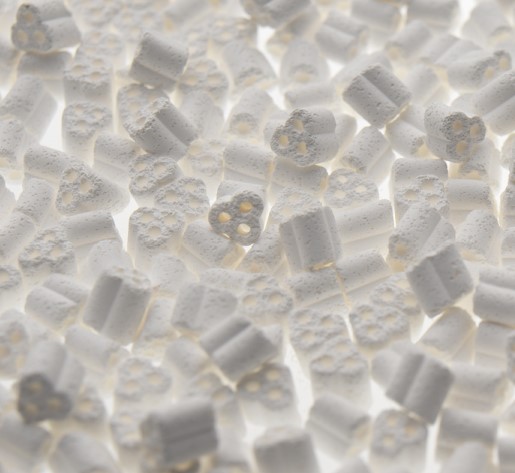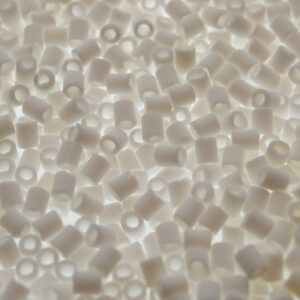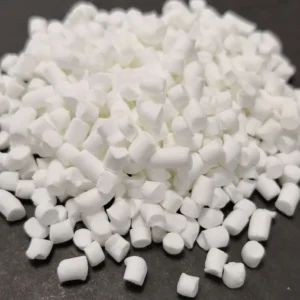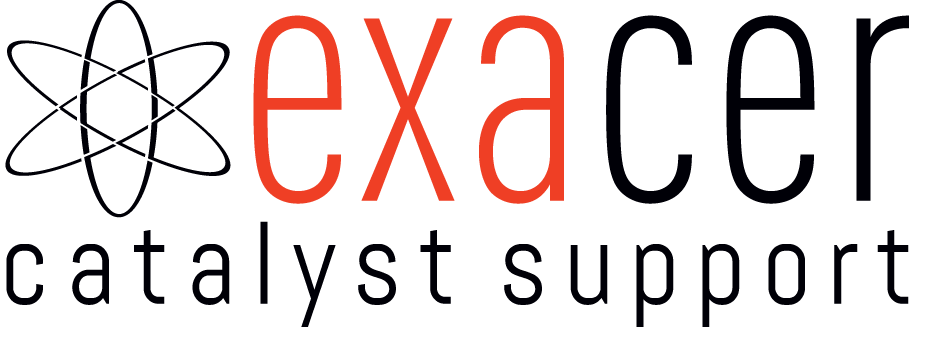Explore our alumina portfolio:
- EX-Axxx/E-series – Our extrudate ‘construction kit’ for tailor-made applications. Download leaflet
- EXAct Spheres (EX-Axxx/S-series) – A new, sphere-like carrier type with outstanding properties for sophisticated solutions. Download leaflet
- EX-Axxx/T-series – Tableted porous and dense alumina carriers for challenging process conditions. Download leaflet
- EX-Bxxx/S-series – Quality alumina beads for economically tight projects. Download leaflet
As a basis for all EX/Axxx series we usually employ high purity raw materials. A typical chemical ‘standard’ profile of a respective carrier is
| Al2O3 | min. 99.5% |
| Na | max. 300 ppm |
| Si | max. 300 ppm |
| Fe | max. 200 ppm |
However, note that Exacer acts independently from any major alumina raw material suppliers and will always try to take the best choice for a customer’s specific project.
For particular applications, which demand still higher purities (e.g., very low sodium), we can improve the chemical profile further by a careful selection of appropriate raw materials. There is a ‘high purity’ (HP) and an ‘ultra-high-purity’ (UHP) series existing. If you want to understand more of the details and the underlying specifications, please kindly contact us and share the particular purity needs for your specific process!
EX-Axxx/E-series
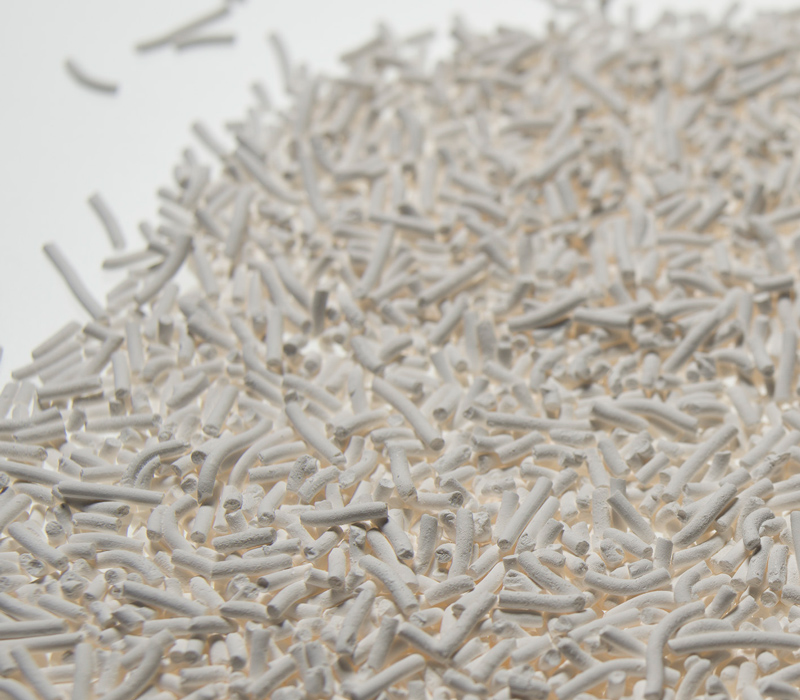
Our EX-Axx/E extrudate series is the perfect ‘construction kit’ basis for any process that requires a tailor-made solution, particularly with view on the pore size distribution.
Shapes
The shaping for this series is particularly versatile. While cylindrical 3 and 4 mm extrudates are a well-established standard in industry, a lower diameter (could be as small as 1 mm) is a typical strategy to increase the surface/bulk-ratio in your fixed bed.
If a customer strives to achieve an even superior combination of body size, outer surface area, pressure drop and bulk density, it may be necessary to stretch out to more advanced shapes, such as rings, trilobes, quadrilobes and many other shapes – and our EX-Axx/E-series is the perfect basis for such developments.
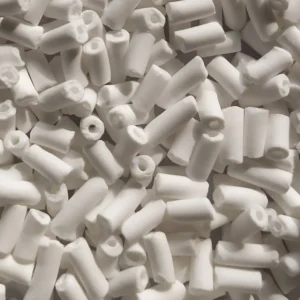
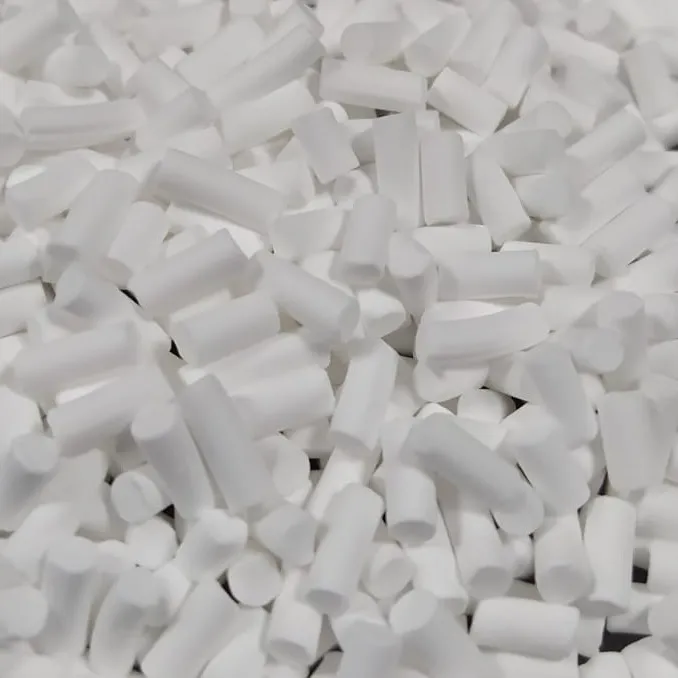
Surface Area & Pore Distribution
The BET surfaces area and the pore structure of this carrier series are versatile as well. On the one end there are microporous structures, predominantly consisting of γ-alumina, with a surface area of up to 250 m²/g and high pore volumes of up to 1 ml/g., on the other end there are pure α-alumina carriers, with strongly reduced Lewis acidity and high chemical resistance towards the outer media, which have surfaces as small as 1 m²/g, but still an impregnation volume of more than 0.4 ml/g.
Also, all intermediate types of alumina phases and respective surface areas are available. Frequently used industrial standards are for example α/θ-mixtures with around 30-40 m²/g or θ/γ-mixtures around 70 – 120 m²/g, which are, e.g., applied in selective hydrogenation processes. See also some typical examples in our respective leaflet.
There are also several options to fine-tune the pore structure for the EX-Axx/E-series: Mono-, bi-, or multi-modal distributions – please ask for the pore size distribution that is particularly required in order to achieve the best selectivity for your process!
The strategy to add large pores to the carrier cannot just be used to improve the internal diffusion transport within a catalyst particle. If one drives this peculiarity to the extreme, it becomes even possible to boost the accessible outer surface area for fast gas phase reactions, that are limited mainly to the geometric surface of a catalyst.
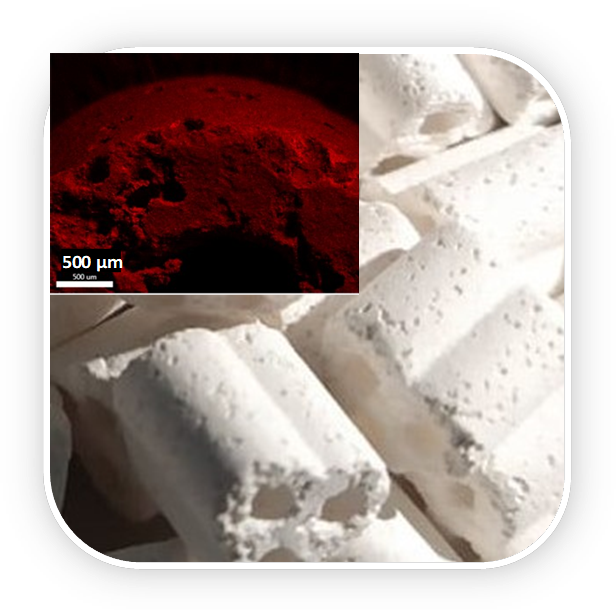
Mechanics
While modelling the outer shape and inner pore texture, one of the main challenges is to maintain good mechanical properties. A carrier particle needs to withstand transport, impregnation, and the final filling processes without losing its integrity. Therefore, we always strive to drive the attrition to the technical achievable minimum value, which for our extrudates is often better than those of the industrially wide-spread ‘standard’ alumina-beads, which are often just chosen for historical reasons.
Also, the crush strength can be a crucial parameter for large fixed beds of catalyst. Our EX-Axxx/E-series shows outstanding strength in spite of the high porosity and the low material density that can be achieved – see also examples in our download section!
Challenge us and send us your mechanical request!
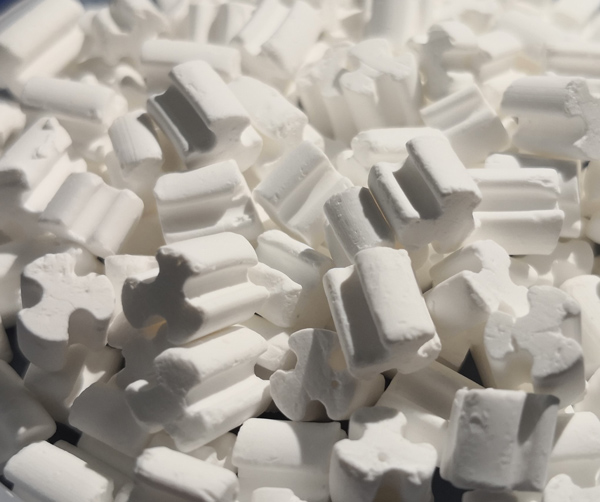
EXAct Spheres (EX-Axxx/S-series)
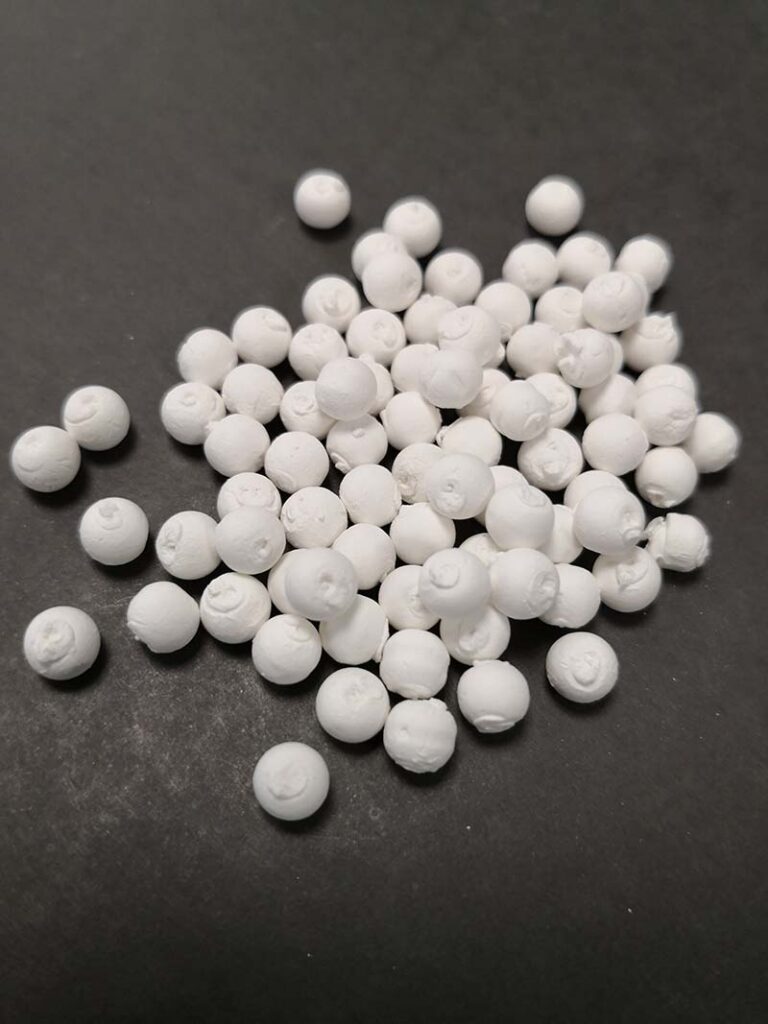
The manufacturing of our EXAct spheres is an exciting new process to create a spherical support with unique properties. It combines several outstanding advantages and overcomes specific weaknesses of typical ‘standard’ alumina beads, which are usually prepared by agglomeration processes. This series could be a perfect choice if the ‘standard’ alumina beads are considered to be not sufficient for a process and extrudates cannot be applied.
Our EXAct spheres are based upon the same raw materials as the other EX-Axxx series, hence identical purities are feasible (see top section), but the shaping process is done in a unique, proprietary process.
A unique combination of properties
- The uniform size (standard deviation << 5%!) accounts for a high void fraction (often >40%) and thus for a much lower pressure drop and more uniform flow distribution in the catalyst packing, when compared to ‘standard’ alumina beads. Currently available standard sizes are 3.5, 4 or 5 mm spheres.
- Other than agglomerated beads, which are manufactured in a layer-wise manner that can cause significant density inhomogeneities across the particle’s diameter and may negatively influence the distribution of active metals, our spheres are absolutely homogeneous along the cross section.
- Particularly for low surface areas, the EXAct Spheres shows outstanding mechanical properties (low attrition & high hardness).
There is a huge versatility for alumina phases, BET-surface area, porosity and pore size distributions – very similar to the possibilities that exist for extruded carriers. In particular it is possible to enhance our spheres with extra transport pores in order to mitigate diffusion processes. - If desired, very low bulk densities of around 500 g/l can be achieved, which gives beneficial economic effects to many catalyst projects.
If this new carrier type has raised your curiosity, please contact us to ask for a sample!
Tableted Alumina – EX-Axxx/T-series
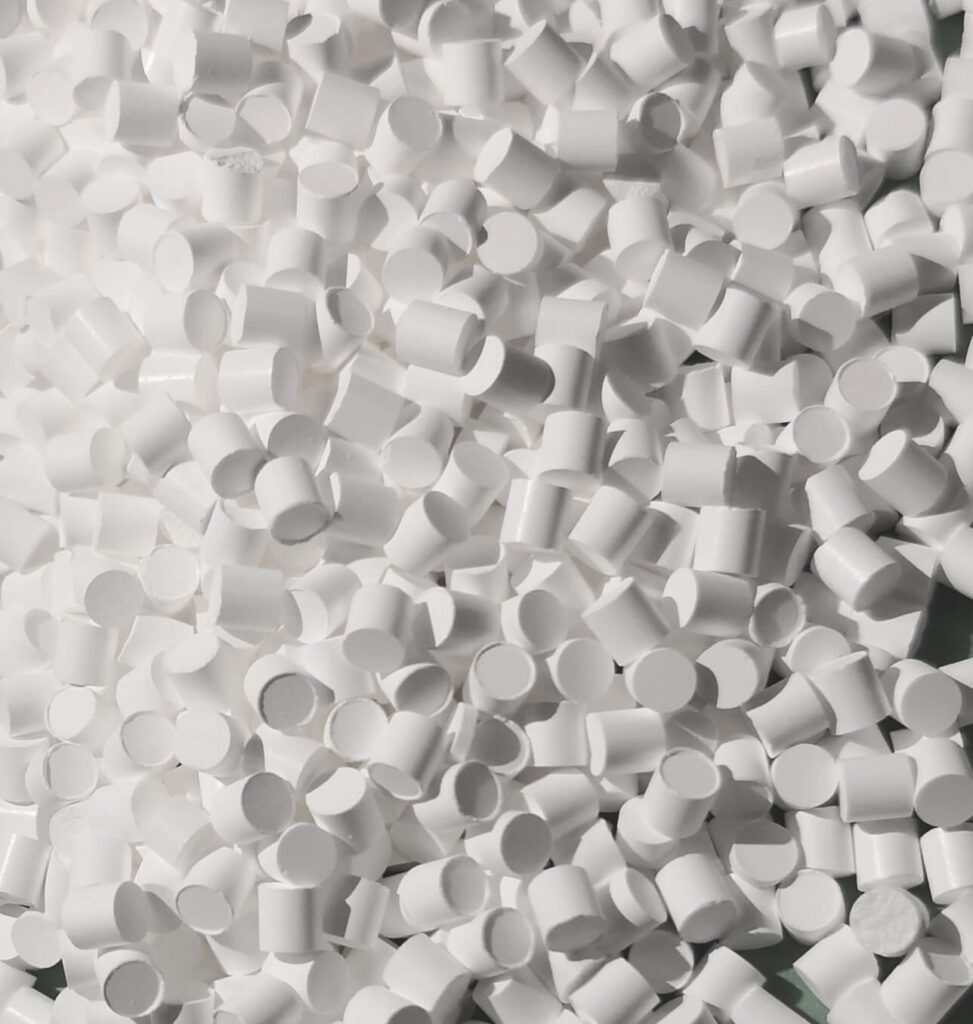
Tableted alumina bodies unlock a new world full of different shapes, that adapt to your particular process requirements – starting from simple cylindrical tablets (e.g., 3×3 or 4×4 mm) and also more complex shapes like rings or spheres are available.
Though in general 3×3 mm tablets are found frequently in the market, due to the (relative) ease of their preparation, there is not really an industrial standard existing. Most carriers are made according to the specific needs of the customer with respect to outer dimensions, pore size distribution, BET surface area, purity and other parameters.
Besides the use as a carrier for impregnation processes, such tableted alumina supports are sometimes also used as inert cores for coated catalysts or as a diluent in highly exothermic reactions. Please check also out the respective leaflets (-> link to leaflets ‘coating carriers’ and ‘hot spot reducers’).
Please kindly let us know your particular challenges to jointly develop the perfect solution for your individual process! (-> link to request form).
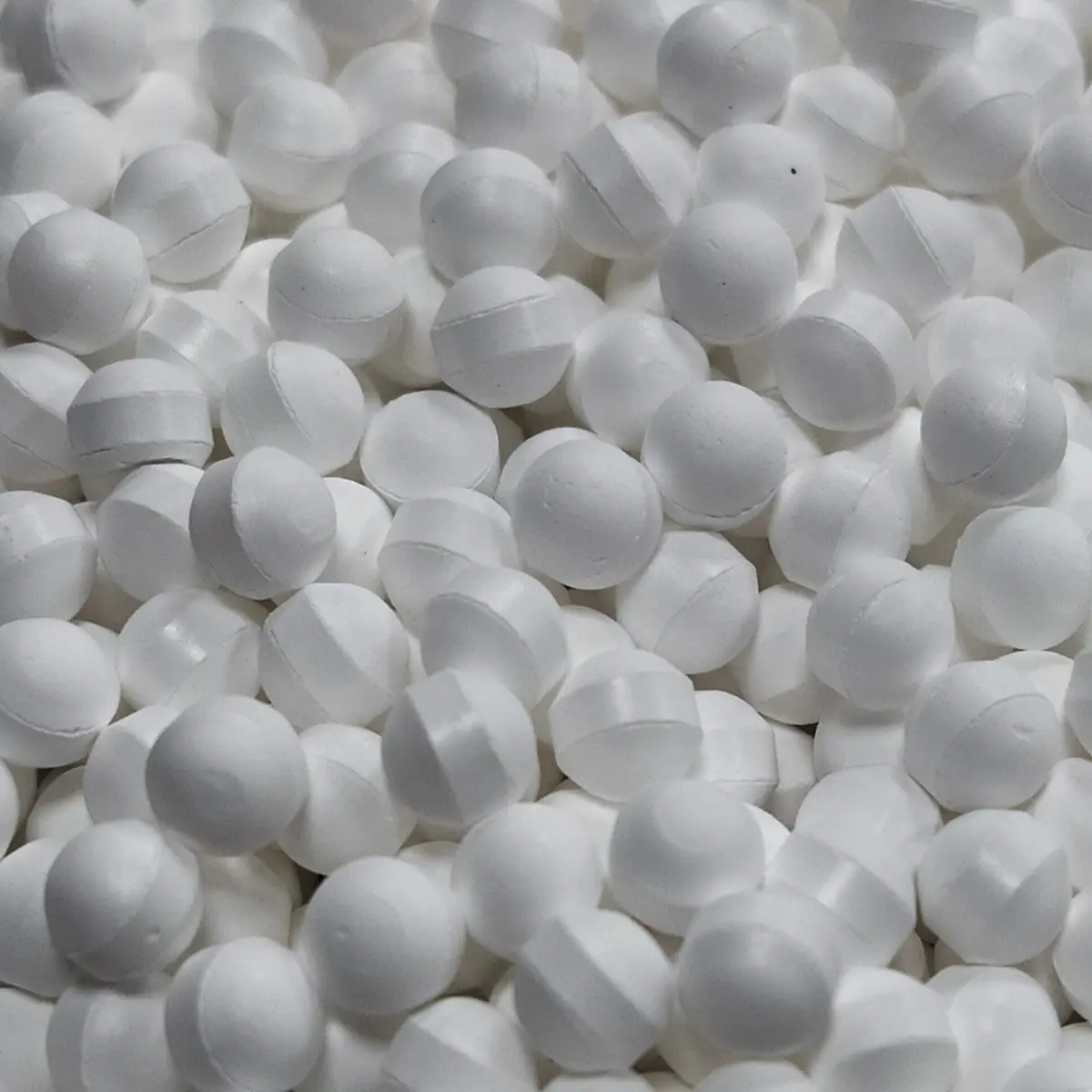
Alumina Beads – EX-Bxxx/S-series
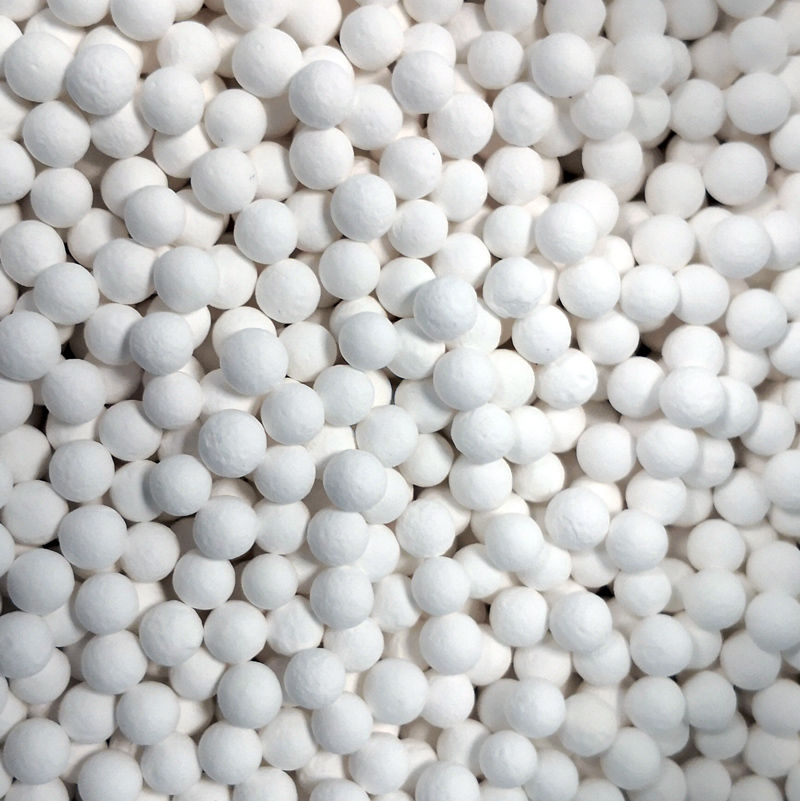
For economically challenging applications Exacer also provides a series of ‘simple’ alumina supports, that are created in a ‘snowballing’ process and have a fair purity (Na2O is typically in the range of 1000 – 1500 ppm). Typical standard sizes are around 3, 4, and 5 mm diameter and there is a certain flexibility to match particular customer needs. The surface area can be greatly varied, starting from more the 300 m²/g and down to far below 10 m²/g, still with a reasonable porosity and good mechanics.
Please contact us to find out more about this complimentary carrier series!

